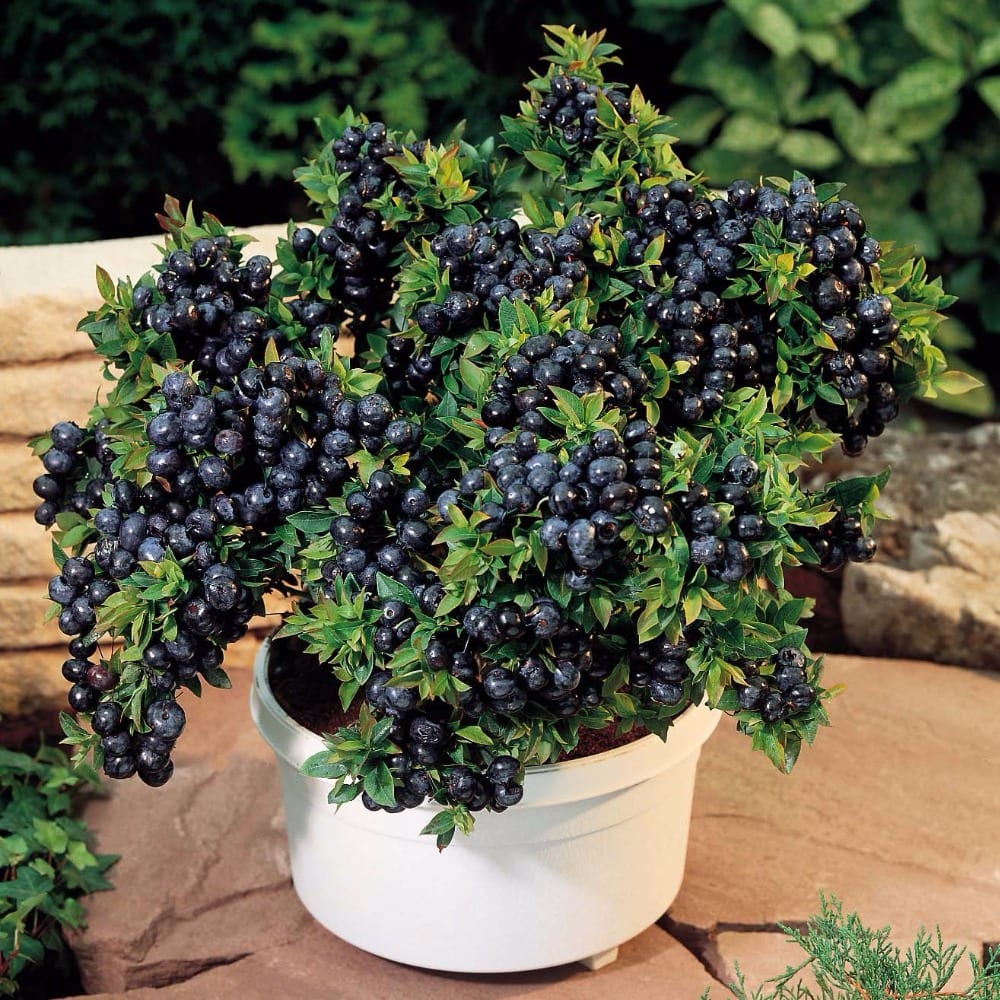Mastering Container Blueberry Growing: A Comprehensive Guide

Imagine biting into a plump, juicy blueberry straight from your own garden. The burst of sweetness and the satisfaction of growing your own fruit are unparalleled. But what if you don't have a sprawling backyard? No problem! Container gardening is the perfect solution for urban farming enthusiasts. Let's dive into the world of blueberry cultivation and discover how to grow blueberries in containers, even in the smallest of spaces.
Why Grow Blueberries in Containers?
Container gardening offers numerous benefits, especially for those engaged in small space gardening. It allows you to control the soil environment, making it easier to provide the acidic conditions blueberries thrive in. Plus, containers are portable, so you can move your plants to the sunniest spots or protect them from harsh weather.
Choosing the Right Container
Selecting the right container is crucial for successful blueberry cultivation. Opt for a pot that is at least 18 inches in diameter and depth. This ensures ample room for root growth and proper drainage. Materials like plastic, terracotta, or fabric pots are all suitable options. Just make sure there are adequate drainage holes to prevent waterlogging.
Selecting the Best Blueberry Varieties
Not all blueberry varieties are created equal, especially when it comes to container gardening. Dwarf varieties like 'Top Hat' and 'Brunswick' are ideal for pots. These compact plants produce abundant fruit and are easier to manage in small spaces. For a bit more variety, consider 'Sunshine Blue,' which is semi-dwarf and self-pollinating.
Preparing the Soil
Blueberries are finicky about their soil. They prefer acidic conditions with a pH between 4.0 and 5.0. Use a well-draining potting mix specifically designed for acid-loving plants. You can also add peat moss or pine bark to enhance the acidity. Avoid using garden soil, as it may contain pathogens and lack the necessary nutrients.
Planting Your Blueberries
Planting your blueberries is a straightforward process. Fill your container about two-thirds full with the acidic potting mix. Gently remove the blueberry plant from its nursery pot and place it in the center of the container. Fill in around the plant with more soil, ensuring the root ball is level with the soil surface. Water thoroughly to settle the soil and eliminate air pockets.
Blueberry Care: Watering and Fertilizing
Proper blueberry care involves consistent watering and fertilizing. Blueberries have shallow root systems, so they need regular watering. Aim for about 1 inch of water per week, adjusting for rainfall. Use a balanced, acid-specific fertilizer every 4-6 weeks during the growing season. Organic options like compost or well-rotted manure can also be beneficial.
Pruning and Maintenance
Pruning is essential for healthy blueberry cultivation. In the first year, focus on removing any damaged or weak branches. In subsequent years, prune to encourage new growth and remove old, unproductive wood. Regular pruning helps maintain the plant's shape and promotes better fruit production.
Pest and Disease Management
While blueberries are relatively pest-resistant, they can still fall prey to common garden pests like aphids and spider mites. Regularly inspect your plants and treat any issues promptly with organic or chemical pesticides. Diseases like powdery mildew and root rot can also be problematic. Ensure good air circulation and avoid overwatering to minimize these risks.
Harvesting Your Blueberries
The moment you've been waiting for—harvest time! Blueberries typically ripen in late summer. You'll know they're ready when they turn a deep blue and fall easily from the bush. Pick them gently to avoid bruising and store them in the refrigerator for up to a week.

Troubleshooting Common Issues
Even with the best blueberry care, issues can arise. If your plants aren't thriving, consider the following:
- Yellowing Leaves: This could indicate a nutrient deficiency or overwatering. Check the soil moisture and adjust your watering schedule.
- Poor Fruit Production: Ensure your plants are getting enough sunlight (at least 6-8 hours a day) and are properly pollinated.
- Stunted Growth: This might be due to inadequate soil acidity or insufficient fertilizer. Test your soil pH and adjust as needed.
Embracing the Joys of Container Gardening
Growing blueberries in containers is not just about the fruit; it's about the journey. Watching your plants grow, blossom, and bear fruit is incredibly rewarding. Plus, you get to enjoy fresh, homegrown blueberries—a treat that's hard to beat!

Conclusion
Mastering container blueberry growing is within your reach. With the right container, soil, and care, you can enjoy a bountiful harvest even in the smallest of spaces. So, why wait? Start your blueberry cultivation journey today and experience the joys of urban farming. Don't forget to click here to learn more about container gardening and other small space gardening tips.
FAQs
What is the best time to plant blueberries in containers?
- The best time to plant blueberries in containers is in early spring or fall, when temperatures are mild, and the plants can establish themselves before the heat of summer or the cold of winter.
How often should I water my container blueberries?
- Blueberries in containers should be watered consistently, aiming for about 1 inch of water per week. Adjust for rainfall and ensure the soil remains moist but not waterlogged.
Can I grow blueberries indoors?
- While blueberries can be grown indoors, they require a significant amount of sunlight—at least 6-8 hours a day. A sunny windowsill or grow lights can help, but outdoor growing is generally more successful.
What are some common pests that affect blueberries?
- Common pests that affect blueberries include aphids, spider mites, and scale insects. Regular inspection and prompt treatment with organic or chemical pesticides can help manage these issues.
How do I know when my blueberries are ready to harvest?
- Blueberries are ready to harvest when they turn a deep blue color and fall easily from the bush. Gently pick them to avoid bruising and enjoy your fresh, homegrown fruit!
0 Response to "Mastering Container Blueberry Growing: A Comprehensive Guide"
Post a Comment